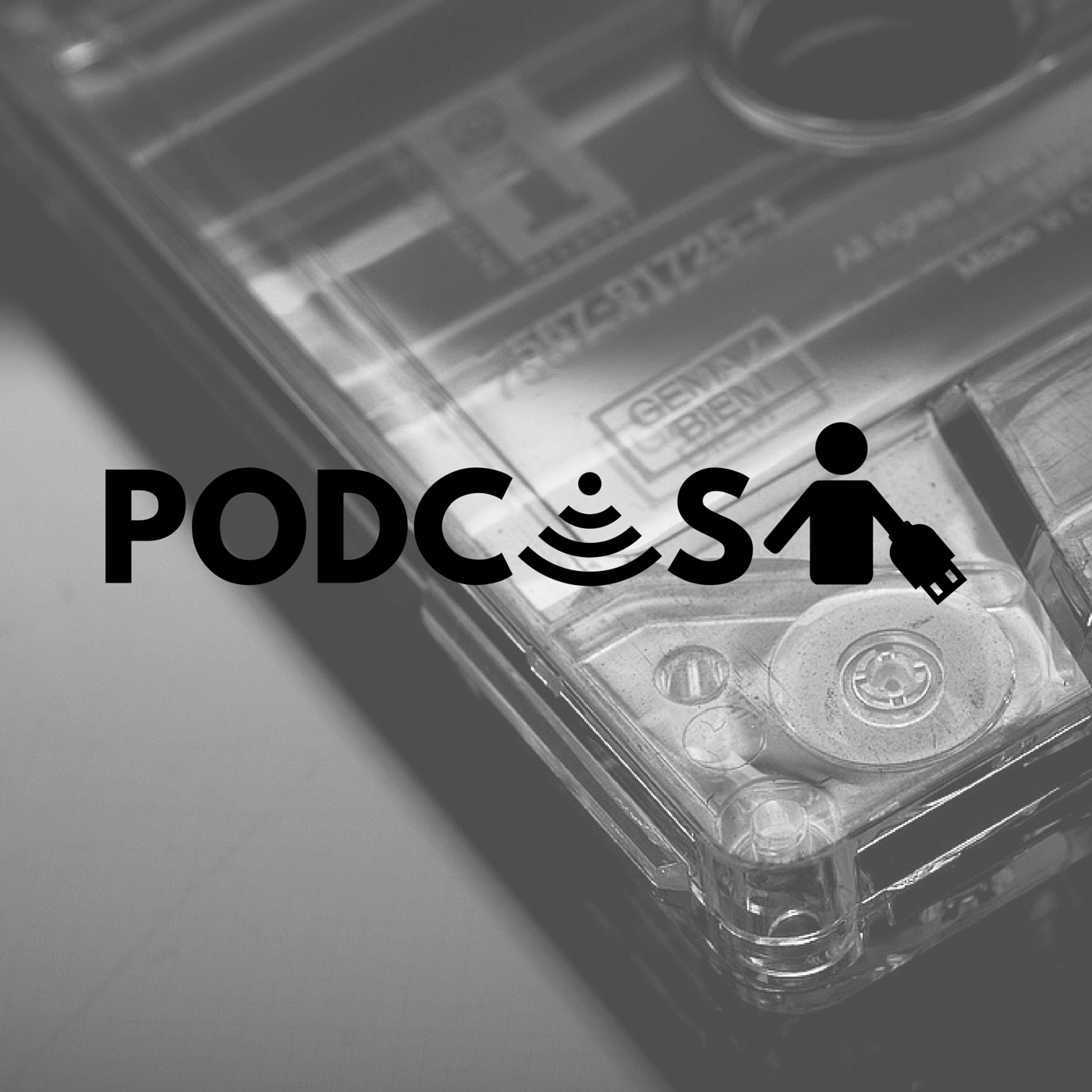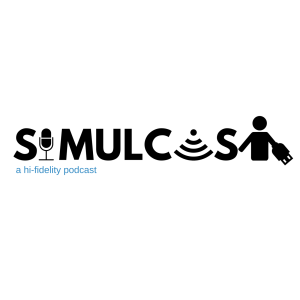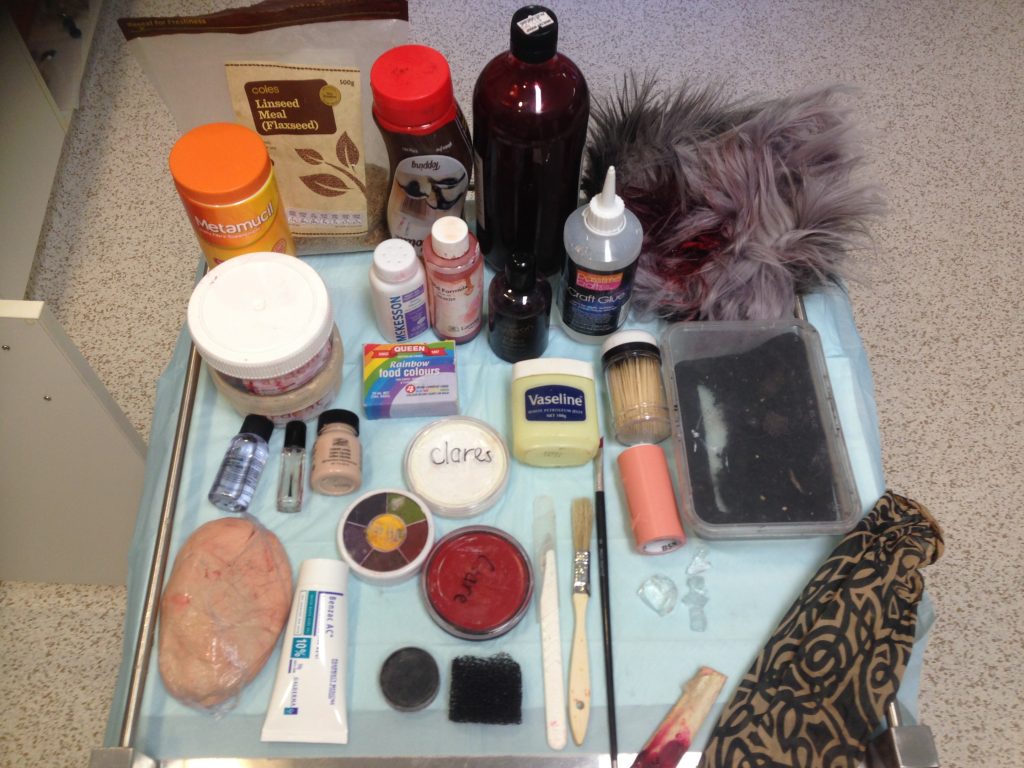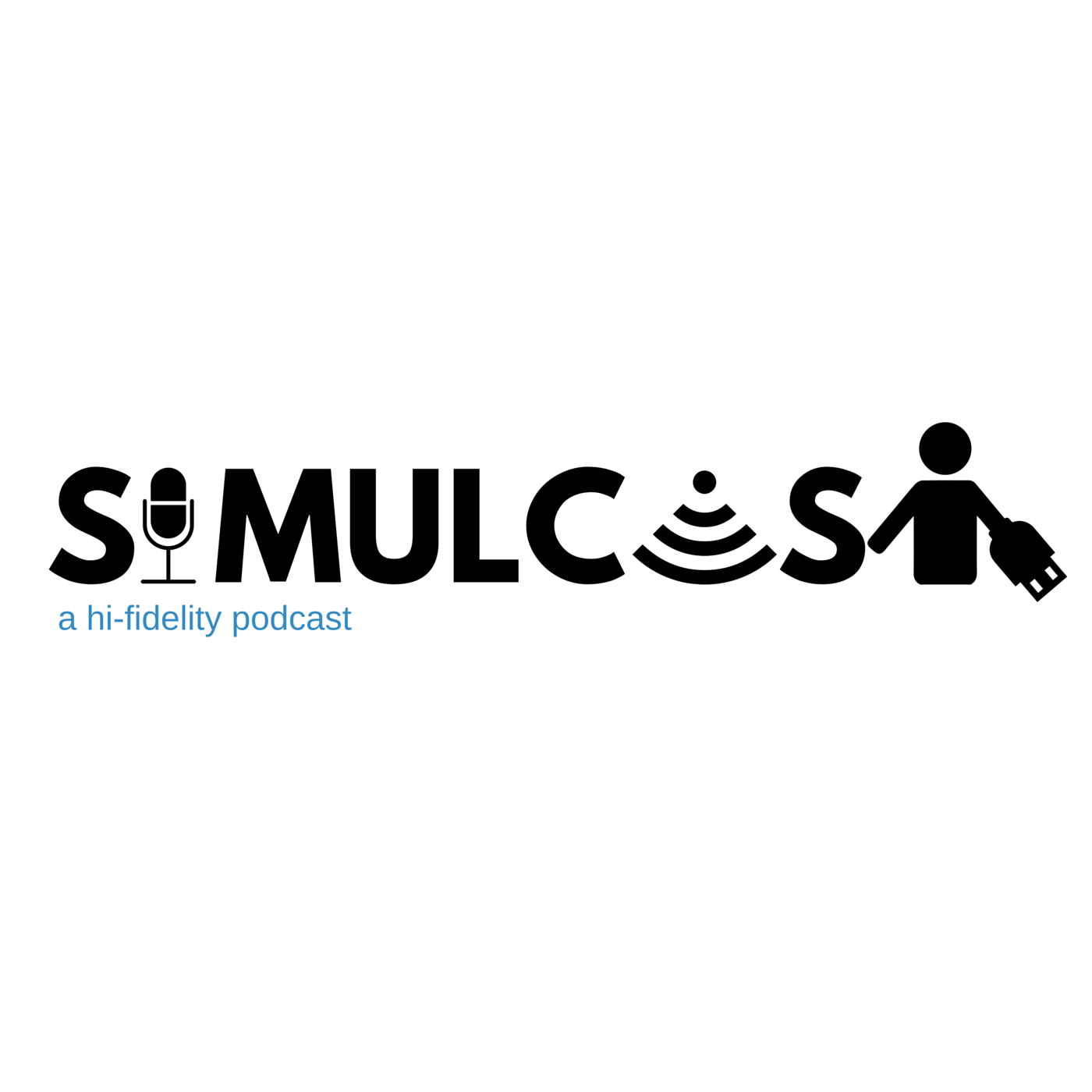Episodes

Thursday Aug 03, 2017
Simulcast Journal Club Podcast 7
Thursday Aug 03, 2017
Thursday Aug 03, 2017
In our July journal club podcast Ben and Vic discuss the paper of the month.
Peterson, Dawn Taylor PhD; Watts, Penni I. PhD, RN, CHSE-A; Epps, Chad A. MD; White, Marjorie Lee MD, MPPM, MA, CHSE (2017) “Simulation Faculty Development : A Tiered Approach” Simulation in Healthcare : The Journal of the Society for Simulation in Healthcare. Publish Ahead of Print, POST AUTHOR CORRECTIONS, 18 March 2017.
We then covered some interesting stuff on simulators dying
BMC Medical Education (2017) 17:109 DOI 10.1186/s12909-017-0944-x
And a deep dive into team science
Rosenman et al. Changing Systems Through Effective Teams: A Role for Simulation. Acad Emerg Med. 2017 Jul 20. doi: 10.1111/acem.13260. [Epub ahead of print]
Looking forward to another great discussion

Sunday Jul 23, 2017
Ep. 9 - The Trojan Horse of Simulation
Sunday Jul 23, 2017
Sunday Jul 23, 2017
The dasSMACC (social medial and critical care) conference was recently held in Berlin. Simulation was a theme woven throughout the conference, and we thought a simulcast episode recapping on some of the messages and themes was timely.
Smacc has arguably redefined the way we think about medical conferences – great speakers, great messages, hard core critical care in an engaging format.
This year, simulation activities were embedded in main stage talks, workshops, panel discussions and the ‘Sim Haus’ we previewed in a recent Simulcast episode.
A series of linked main stage talks from Clare Richmond, Chris Hicks and Jon Gatward gave us a framework for thinking about simulation modalities and matching method to objective. Following the journey of a head injured patient, we saw performances by actor Renee Lim, the incredibly realistic manikin made by Lifecast, and how end of life discussions, organ donation, cognitive biases can be addressed using simulation just as well as the action sequences involving airway management of a head injury.
Also on the main stage - Brian Burns opening talk wasn’t about simulation, but rather was a futuristic trauma simulation in which he demonstrated the ways technology might improve our pre-hospital trauma care in the not too distant future, including drone delivered blood products.
Jenny Rudolph gave us a practical insight and skills for dealing with ‘WTF’ moments, by seeking out the underlying frames for behaviour we find annoying or disappointing. She led a whole of audience exercise in resetting our response from unhelpful emotion to curiosity, bringing to life her longstanding work in double loop learning and debriefing using advocacy inquiry.
The interprofessional panel discussion (aka ‘the tribalism panel’) sparked conversations about how simulation can be an agent of culture change, but also how deliberate our strategies need to be in making our educational outcomes truly interprofessional.
Both Jesse and I were involved in the education panel on Day 3 where simulation was again a core theme, especially as it pertains to preparing learners for the future, connecting with quality improvement in hospitals, and integrating into everyday work. Walter Eppich’s work on how to take our debriefing skills into the clinical area through coaching conversations received a lot of attention. As the Twitter moderator, Jesse wonderfully captured some audience questions and responses in this storify.
Pre-conference workshops on Debriefing, Leave the Sim Lab behind and Stress Inoculation were a chance for attendees to deep dive with internationally respected faculty. Jan Schmutz presented his recent work on team reflexivity in the debriefing workshop (an enlightening read, but you will need to concentrate).
The last of those workshops connected with a presmacc meeting in London – the Performance Psychology in Medicine Seminar. This fantastic program connected the worlds of high performance in pre-hospital care, other healthcare, elite sport and on stage. The event highlighted work like Mike Lauria’s Psychological skills to improve emergency care providers performance under stress, and others like Vicki Leblanc.
The Sim Haus was a dedicated physical space within the conference venue, which housed industry displays and ‘meet the experts’ session. There was some fascinating new technology and an atmosphere of sharing sim ideas and challenges.
Where to for more?
Feel free to go back to #dasSMACC and also #simHaus, and of course wait for the talks and podcasts to be released on the smacc website and podcasts over the year.
Next smacc conference is in Sydney February 2019

Wednesday Jul 19, 2017
Advances in Simulation - The Simulcast Collaborative
Wednesday Jul 19, 2017
Wednesday Jul 19, 2017
Simulcast is pleased to announce a collaboration with Advances in Simulation, an open access simulation journal based in Europe. In this interview with Editor in Chief Professor Debra Nestel (@DebraNestel), we profile the content, people and philosophy of the journal.
Debra is already a friend of Simulcast, and wrote the expert commentary for our September 2016 Journal Club.
Our plan is to produce a bi-monthly podcast featuring an article from Advances, with an interview with the author, and editor or another discussant. Our aim is to continue to connect the simulation community across geography, discipline and modality, and to help research to be translated to practice. This series will complement our ongoing Journal Club (which will still feature articles from across the relevant journals) and our usual podcasts.
In this podcast, we take the opportunity to talk about diverse applications in simulation, peer review, open access journals, standards for simulated patients and the ethics of simulation.
A wonderful chance to listen to a friend and mentor to many in the simulation community.
Look out for our podcast with Ryan Bridges and his editorial “From simulation research to education policy: how much evidence is enough?”. Advances in Simulation 20161:22

Tuesday Jul 04, 2017
Simulcast Journal Club Podcast 6
Tuesday Jul 04, 2017
Tuesday Jul 04, 2017
In our June journal club podcast Ben and Vic discuss the paper of the month.
Cheng et al. “Coaching the Debriefer: Peer Coaching to Improve Debriefing Quality in Simulation Programs” Simulation in Healthcare : The Journal of the Society for Simulation in Healthcare. Publish Ahead of Print, POST AUTHOR CORRECTIONS, 20 May 2017
Ben summarised the blog discussion and Walter Eppich’s expert opinion.
We then reviewed some recent papers
Roussin CJ1, Weinstock P. SimZones: An Organizational Innovation for Simulation Programs and Centers. Acad Med. 2017 May 30. doi: 10.1097/ACM.0000000000001746. [Epub ahead of print]
And
Bong et al. The effects of active (hot-seat) versus observer roles during simulation-based training on stress levels and non-technical performance: a randomized trial. Advances in Simulation (2017) 2:7
DOI 10.1186/s41077-017-0040-7 (Open Access)
And Ben introduced next month’s paper on simulation faculty development.
Looking forward to another great discussion
Vic

Saturday Jun 17, 2017
Pause & Discuss - Silver Q Interprofessional Sim Program
Saturday Jun 17, 2017
Saturday Jun 17, 2017
Norma Robinson leads an interprofessional simulation program involving medical students from University of Queensland Rural Clinical School and nursing students from the University of Southern Queensland.
The program is based in Toowoomba but has now been scaled up to include students from many part of rural southern and central Queensland.
Interprofessional education and teamwork training at the student level has been a challenging area, although with some excellent programs, and I think simulation is at least part of the solution.
Norma was kind enough to host me for a visit and I spoke to her afterwards about the program, the motivations for interprofessional education, and how to really build a healthcare workforce to serve a community.

Tuesday Jun 13, 2017
Pause & Discuss - SimHaus at DASSMACC
Tuesday Jun 13, 2017
Tuesday Jun 13, 2017
Sara-Catrin Cook joined me for short chat about all things sim at smacc.
Sara is part of a group who has put together a comprehensive simulation theme woven through the conference, including the SIMHaus – a showcase within the Tempdrom where attendees can meet and talk to other simulation enthusiasts ad experts.
The SimHaus will be physically set up next to the main arena, and Sara tells us what to expect. Simulcast will be there covering the event for those who can’t make it.
See you in Berlin

Monday Jun 05, 2017
Simulation Journal Club Podcast 5
Monday Jun 05, 2017
Monday Jun 05, 2017
In an effort to streamline blog posts, we are continuing a merged Journal Club Podcast and monthly wrap post.
Please read our pdf summary of the May Journal Club article, the month’s discussion and our expert commentary here

In our May journal club podcast Ben and Vic discuss the papers of the month – a duo on Rapid Cycle Deliberate Practice and the approach to debriefing in this format
Structuring feedback and debriefing to achieve mastery learning goals Eppich WJ1, Hunt EA, Duval-Arnould JM, Siddall VJ, Cheng A. Acad Med. 2015;90:00–00. First published online doi: 10.1097/ACM.0000000000000934
Pediatric resident resuscitation skills improve after “Rapid Cycle Deliberate Practice” training Hunt EA, Duval-Arnould JM, Nelson-McMillan KL, Bradshaw JH, Diener-West M, Perretta JS, Shilkofski NA. Resuscitation. 2014 Jul;85(7):945-51. doi: 10.1016/j.resuscitation.2014.02.025. Epub 2014 Mar 4.
We then reviewed some recent papers
- Theilen, Ulf et al.Regular in-situ simulation training of paediatric Medical Emergency Team leads to sustained improvements in hospital response to deteriorating patients, improved outcomes in intensive care and financial savings. Resuscitation , Volume 115 , 61 - 67
A nice segue from Hunt et al – translating outcomes from individual performance improvement to patient and systems level outcomes
- Maicher, Kellen et al. Developing a Conversational Virtual Standardized Patient to Enable Students to Practice History-Taking Skills. Simulation in Healthcare: The Journal of the Society for Simulation in Healthcare: April 2017 - Volume 12 - Issue 2 - p 124–131
One for the technology enthusiasts – using AI/ natural language processing to create patients we can have conversations with. Make sure you watch movies like Ex Machina and Passengers for your background reading
And Ben introduced next month’s paper on peer coaching.
Cheng, Adam et al. “Coaching the Debriefer: Peer Coaching to Improve Debriefing Quality in Simulation Programs” Simulation in Healthcare : The Journal of the Society for Simulation in Healthcare. Publish Ahead of Print, POST AUTHOR CORRECTIONS, 20 May 2017
Looking forward to another great discussion
Vic

Friday May 19, 2017
Ep. 8 - Live. Die. Repeat. Gamification of simulation training
Friday May 19, 2017
Friday May 19, 2017
This month we turned our focus to simulation delivery formats, and in particular a novel approach described recently.
Sunga K, Sandefur B, Asirvatham U, et al. LIVE. DIE. REPEAT: a novel instructional method incorporating recursive objective-based gameplay in an emergency medicine simulation curriculum BMJ Simulation and Technology Enhanced Learning 2016;2:124-126.
We were fortunate to be joined by 2 authors of the paper
Kharmene Sunga (@Kharmene) is an emergency physician at Mayo Clinic in Rochester, Minnesota, where she is also lead for simulation in the ER residency. Daniel Cabrera (@CabreraERDR) is also an emergency physician at Mayo, a social media enthusiast and @smaccteam speaker.
Their paper, and original blog post, challenges our traditional approach to simulation delivery – often ether a scenario followed by long(ish) debrief, or ‘pause and discuss’ where the scenario is paused at intervals for discussion and then continues on.
Using gamification principles, and a fair bit of movie watching – Kharmene and Daniel have devised a sim format that involves ‘recursive objective based gameplay’ – where participants attempt to reach higher stages in the ‘game’ but have to repeat the level if they die. Seen from an educational theory perspective – this is deliberate practice in action. It’s a fast paced and engaging format, and provides a chance to practice again after a short and directive debrief.
Inspired by the idea of forgoing some of the long debrief after a scenario in favour of a chance for participants to practice, I’ve adapted the principle to our final year student sims, which have been similarly well received.
Comments and other ideas for adaption welcome.
vb

Monday May 01, 2017
Simulcast Journal Club Podcast 4
Monday May 01, 2017
Monday May 01, 2017
In our April journal club podcast Ben and Vic discuss the paper of the month – a classic debriefing article.
Jenny W. Rudolph, PhD, Robert Simon, EdD, Ronald L. Dufresne, MS, and Daniel B. Raemer, PhD There’s No Such Thing as “Nonjudgmental” Debriefing: A Theory and Method for Debriefing with Good Judgment. Simulation in Healthcare • Volume 1, Number 1, Spring 2006
We then reviewed some recent papers
- The Simnovate series - all FREE for now
Rajesh Aggarwal. Simnovate: simulation, innovation and education for better healthcare. BMJ Simulation and Technology Enhanced Learning Mar 2017, 3 (Suppl 1) S1-S2; DOI: 10.1136/bmjstel-2016-000184
Philip H Pucher, et al. Simulation research to enhance patient safety and outcomes: recommendations of the Simnovate Patient Safety Domain Group. BMJ Simulation and Technology Enhanced Learning Mar 2017, 3 (Suppl 1) S3-S7;
Wayne Choi, et al. Engagement and learning in simulation: recommendations of the Simnovate Engaged Learning Domain Group. BMJ Simulation and Technology Enhanced Learning Mar 2017, 3 (Suppl 1) S23-S32; DOI: 10.1136/bmjstel-2016-000177
Natal, Brenda MD, MPH; Szyld, Demian MD, EdM; et al. Academic Medicine April 4, 2017
Hellier, Susan D. et al. Simulation in Healthcare: The Journal of the Society for Simulation in Healthcare January 9, 2017
And Ben introduced next month’s 2 papers – a complementary duo focused on Rapid Cycle Deliberate Practice.
Structuring feedback and debriefing to achieve mastery learning goals Eppich WJ1, Hunt EA, Duval-Arnould JM, Siddall VJ, Cheng A. Acad Med. 2015;90:00–00. First published online doi: 10.1097/ACM.0000000000000934
Pediatric resident resuscitation skills improve after “Rapid Cycle Deliberate Practice” training Hunt EA, Duval-Arnould JM, Nelson-McMillan KL, Bradshaw JH, Diener-West M, Perretta JS, Shilkofski NA. Resuscitation. 2014 Jul;85(7):945-51. doi: 10.1016/j.resuscitation.2014.02.025. Epub 2014 Mar 4.
Looking forward to another great discussion
Vic

Wednesday Apr 19, 2017
Ep. 7 - Moulage and Making Stuff
Wednesday Apr 19, 2017
Wednesday Apr 19, 2017
This episode was a ‘mix tape’ of moulage and other techniques to achieve physical realism in simulations – including procedural and anatomy teaching
Clare Scott offered her considerable expertise in moulage and making bespoke manikins for trauma simulations. She emphasized keeping in simple, keeping it real and doing your research – online and through networks of interested sim moulage folks (like Behind the sim curtain).

Clare offered some practical examples for making ‘Schkin’ for moulding wounds and other skin defects, bile from coke green food colouring, and more. She has a fabulous handout here: 
Keri Shafer shared her plans for using 3 D printing hearts to learn about congenital heart disease. Keri (@kerizozo) is a cardiologist from Boston whose clinical and educational work is focused on those tricky plumbing issues. Using a process designed to help surgeons operate better, she went to the 3D printing group within the Boston Childrens Hospital Simulation program and developed models of various forms of congenital heart disease. Fabulous collaboration between clinician educators and engineers. We wait with interest to hear the outcomes of her research in evaluating this educational technique.
We asked Andy Buck, of ETM course fame, about his favourite home made part task trainer, and how he makes it. Andy cited better functional task alignment and lower cost as key reasons to ‘make your own’. We chatted about whether 3D printing is ready for prime time for the average simulation educators? For those superkeen Andy is happen to be contacted on Twitter via DM (@edexam)
Finally, we spoke to Jessica Stokes-Parish in her minimal spare time between work and convening this year’s Australasian Simulation Congress. She’s just published an article that asks us to reflect of how much ‘bang for buck’ we get from the moulage efforts we make as sim educators.
Does Appearance Matter? Current Issues and Formulation of a Research Agenda for Moulage in Simulation. Stokes-Parish, Jessica B. M. Nurs (Adv Prac); Duvivier, Robbert MD, PhD; Jolly, Brian PhD. Simulation in Healthcare February 2017 - Volume 12 - Issue 1 - p 47–50
I enjoyed this article so much I wrote a blog post about it for the International Clinical Educators Network blog.

